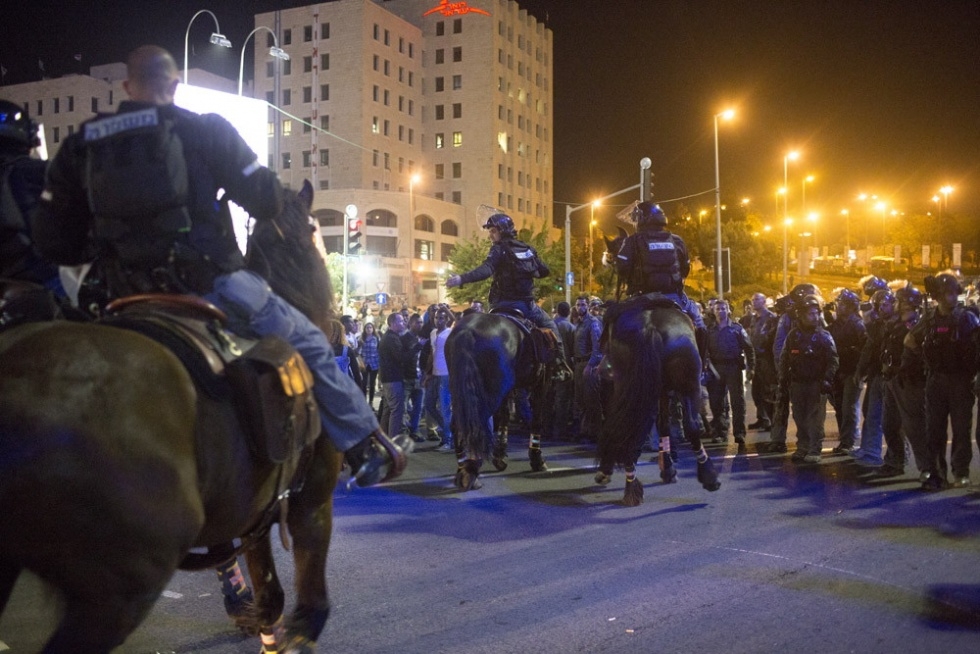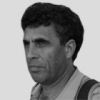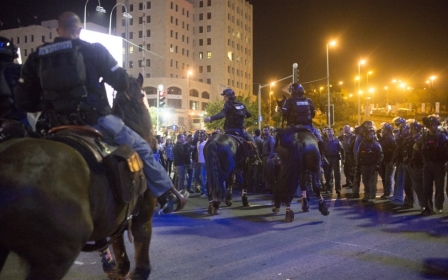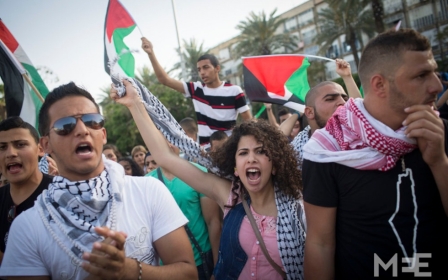The angry streets of Tel Aviv

Tel Aviv is not a city rich with public squares and piazzas. The largest of all is situated just in front of City Hall and until November 1995 it was called Kings of Israel (Malkhei Israel) Square. After Prime Minister Yitzhak Rabin was assassinated at this very square during a pro-peace demonstration, its name was changed to Rabin Square; but this did not change its main function: a gathering place for all sorts of demonstrations and protests.
Thus, the demonstration held on Sunday evening in protest against police brutality toward Jews of Ethiopian descent was not supposed to be out of the ordinary. Yet it certainly was. For a few hours the square and its surroundings, right in the centre of Tel Aviv, became a battleground between policemen and protesters - most of them of Ethiopian descent. Police fired stun grenades, tear gas canisters and water cannons. Scenes typical of the demonstrations that are regularly disbursed in the West Bank made their first appearance ever in Tel Aviv.
It all began a week ago with a short video clip on YouTube showing two policemen grabbing a young Ethiopian soldier and hitting him for no apparent reason. For the Ethiopian Jewish community this was nothing new. For years they have complained that they are harassed and assaulted by the police just because of the colour of their skin, but they were not believed. Now, with the video clip, they had the proof.
Not that such visual proof was needed. In Israel's juvenile prison, Ofek, some 40 percent of prisoners are of Ethiopian descent while their share in Israel's population is less than two percent. Claims of "over-policing" of Ethiopian youth seem to be based on facts.
In the army service they do not fair better. More than 50 percent of soldiers of Ethiopian descent spend time in army detention centres, against less than 25 percent among non-Ethiopian soldiers. Twelve percent of all detainees in the army are of Ethiopian descent, ten times their more than their fellow non-Ethiopian soldiers.
These figures are just the tip of the iceberg. More than 30 years after the first wave of Jewish immigration from Ethiopia arrived in Israel, this 150,000-strong community continues to see itself pushed away from mainstream Israeli society. Ethiopian Israelis live in the poorest neighbourhoods in Israel and when they try to move out, their attempts to buy or rent houses in "white" quarters are often rejected.
Their children are often sent to Ethiopian-only schools, and many of them drop out. Even when they do reach higher education, many of them report that their job application is not even considered once the employers see their Ethiopian name or meet them. Even with second-generation immigrants, the gap between them and the rest of Israeli society is widening rather than closing.
The protests that occurred last week shortly after the filmed violence against the Ethiopian Israeli soldier had a lot to do with generation. The older generation, who came from Ethiopia on the wings of a Messianic longing for the Land of Israel, did not know the language, were unfamiliar with the culture and were not keen to complain - even if they found themselves ignored or discriminated against. This attitude earned them the fame of being "polite and gentle" - traits not very appreciated in the generally “rough” Israeli society.
Second generation anger
Second-generation Ethiopians, who were born in Israel, speak Hebrew and do military service, tend to feel much less grateful for being allowed to come to the "Promised Land". They are much more aware of their rights and they fail to understand why they should be rejected only because of the colour of their skin. Some look to the African-American experience and find much in common: from life in ghetto-like neighbourhoods, to daily confrontations with police, to the permanent feeling of being unwanted in too many places.
The protests that began last week in Jerusalem were dominated by young people. And right from the start, they were quite aggressive. They blocked main roads in Jerusalem for several hours and tried to march on the Prime Minister's office. Four years ago, huge social protests swept Israel, but the leaders of those protests were mainly "white" (meaning Ashkenazi, or of European descent) middle-class Jews, and protesters hugged the policemen. The Ethiopian protesters cursed them.
The protests against the treatment of Israeli-Ethiopian youth came as pictures of the clashes in Baltimore were screened all over the world. Some of the leaders of the protests admitted that Baltimore did have an effect on angry Ethiopian-Israeli youths. Pnina Tameno-Shate, a former member of the Knesset, said that some of the more extreme groups took Baltimore as a model. This explains why some raised the Ethiopian flag, as if stressing their African origins, not unlike what occurred in some parts of the black community in the US in the mid-20th Century.
Whether the protesters imitated Baltimore or not is less important. What is more important is that the police used violence in ways unknown to Jewish protesters. The police did not fire live bullets at them, as they did against Palestinian citizens of Israel protesting in October 2000 and on other occasions - but the police did use tear gas and shock grenades. There was certainly a feeling that the police regarded the protesters as an enemy.
The fear has gone
Yet - and this may be more proof of the alienation felt by these young Ethiopian Israelis - the violence only pushed protesters to raise the challenge even higher. In a demonstration in Tel Aviv earlier this week, protesters blocked the main ring-road around the city for three hours, and later moved into Rabin Square in clear defiance of the police. "We are not afraid, we are a new generation," was one of the most popular slogans they chanted, before the police came into action and brutally threw them out of the square.
Gadi Yabarkan, one of the prominent leaders of this new generation, said that what happened in Rabin Square was "a defining event for all those wishing to mend the injustices in Israel and build a society without racism and discrimination". He said he sees a partner in Israeli society, but he is afraid that Israeli society does not see him as a partner. "What we did is point the spotlight at the dark corners that the Israeli society has never seen."
The Jewish-Israeli society likes to see itself as incredibly cohesive, due to a constant perception of external threats. This self-perception has always been shaky, with tensions between Mizrahi and Ashkenazi Jews, between secular and Orthodox Jews, between liberal Tel Aviv and conservative Jerusalem. But the violent clashes in Rabin Square were proof of how weak the fabric is that holds Israeli society together.
This does not necessarily mean that we will see more similar violent outbursts in the near future. But it will influence some new thinking in Israel about how racist it has become. And maybe Israel will realise it has become - perhaps against its will - a multicultural society.
Just a week before the Ethiopian-Israeli protest in Rabin Square, members of the Palestinian minority in Israel demonstrated for the first time in the same square in Tel Aviv, not far away in Nazareth or Umm al-Fahm as they have before. The Palestinian citizens of Israel, like the Ethiopian Israelis, claimed the main square of Tel Aviv as theirs. This is a new beginning. It is just too early to say where will it lead us.
- Meron Rapoport is an Israeli journalist and writer, winner of the Napoli International Prize for Journalism for a inquiry about the stealing of olive trees from their Palestinian owners. He is ex-head of the News Department at Haaertz, and now an independent journalist.
The views expressed in this article belong to the author and do not necessarily reflect the editorial policy of Middle East Eye.
Photo: Israeli police officers and protesters are pictured in Tel Aviv (MEE/Oren Ziv)
New MEE newsletter: Jerusalem Dispatch
Sign up to get the latest insights and analysis on Israel-Palestine, alongside Turkey Unpacked and other MEE newsletters
Middle East Eye delivers independent and unrivalled coverage and analysis of the Middle East, North Africa and beyond. To learn more about republishing this content and the associated fees, please fill out this form. More about MEE can be found here.





